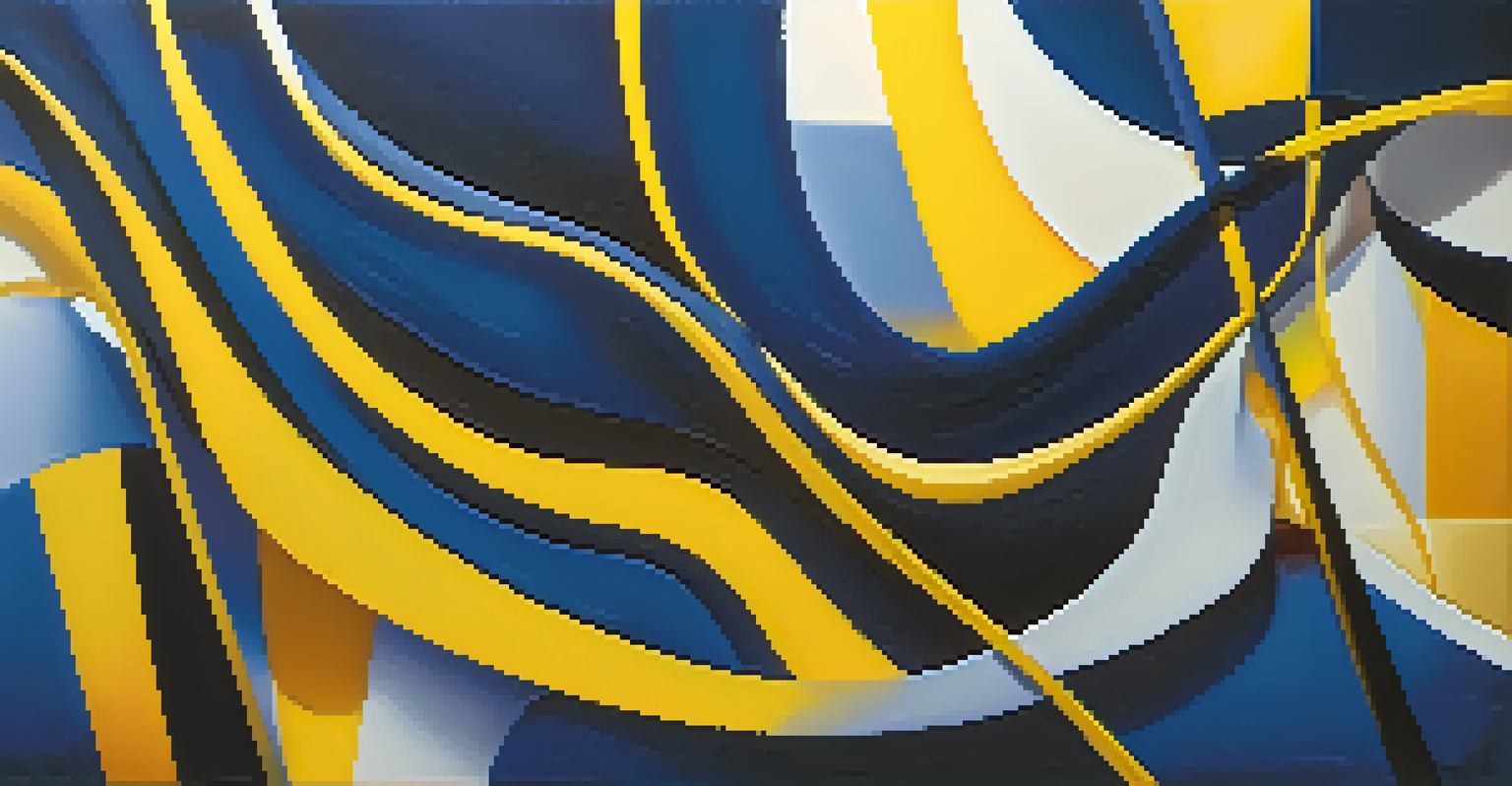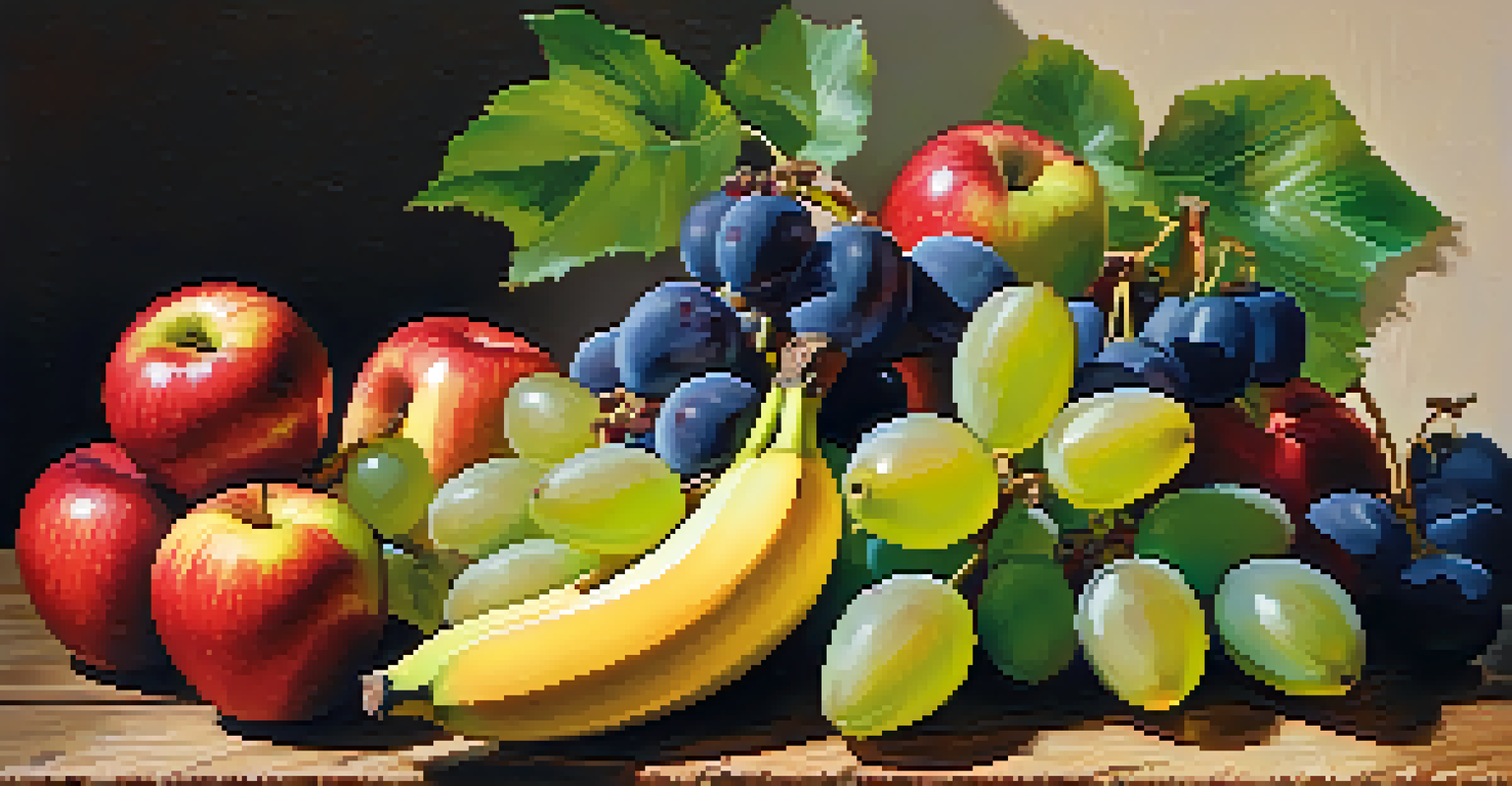The Psychological Impact of Color in Visual Art Creations

Understanding the Basics of Color Psychology
Color psychology examines how different colors affect human emotions and behavior. For instance, warm colors like red and orange can evoke feelings of excitement or warmth, while cooler colors such as blue and green often bring about calmness. Understanding these emotional responses helps artists convey specific messages in their work. When an artist chooses a palette, they are not just picking colors, but also influencing how their audience feels about that piece.
Color is the keyboard, the eyes are the harmonies, the soul is the piano with many strings.
Take, for example, a sunset painting dominated by oranges and reds; it may instill feelings of warmth and nostalgia. In contrast, a piece with a blue and gray palette might evoke sadness or contemplation. Artists intentionally use colors to guide viewers' emotional journeys through their art. This psychological connection to color is a powerful tool that can transform a simple visual into an emotional experience.
Ultimately, color is more than just an aesthetic choice in art; it’s a fundamental part of storytelling. Artists can manipulate colors to enhance their narratives, making them a crucial element in visual storytelling. By understanding the basics of color psychology, both artists and viewers can engage more deeply with the emotional layers of visual art.
The Role of Cultural Context in Color Interpretation
Cultural context plays a significant role in how colors are interpreted across different societies. For example, while white is often associated with purity and weddings in Western cultures, it may symbolize mourning in some Eastern cultures. This variance means that an artist must consider their audience's cultural background when selecting colors for their work. A color that resonates positively in one culture could be interpreted negatively in another.

Artists who are aware of these cultural differences can create more inclusive and impactful works. By incorporating culturally significant colors, they can foster deeper connections with diverse audiences. This understanding also allows artists to challenge stereotypes and encourage dialogue about cultural interpretations of color in their pieces.
Color Influences Emotions
Different colors evoke specific emotions, allowing artists to guide viewers' emotional experiences through their work.
In an increasingly globalized world, artists are frequently blending cultural influences in their work. This blending can lead to a richer palette that speaks to a wider audience while also provoking thought about cultural identity. Recognizing the cultural implications of color not only enhances the artwork but also broadens the conversation around it.
Color and Emotional Responses: A Closer Look
Color can trigger a wide array of emotional responses in viewers, often based on personal experiences and associations. For example, someone might feel joy when seeing bright yellows, reminiscent of sunny days spent outdoors, while another might feel anxious due to past experiences tied to that color. This subjectivity means that artists must be aware of the potential emotional weight their color choices carry. The goal is to create an emotional resonance that aligns with their artistic vision.
Colors are the smiles of nature.
Consider how an artist uses contrasting colors to elicit tension or harmony. A piece with sharp contrasts, like black and white, can evoke feelings of conflict or duality, whereas softer, analogous colors might create a sense of peace and unity. By manipulating color, artists can evoke complex emotional landscapes that invite viewers to engage on a deeper level.
Ultimately, the emotional impact of color in art is a dance between the artist's intention and the viewer's interpretation. Each color choice can be a deliberate step in this dance, carefully crafted to elicit specific feelings. The interplay of these emotions is what makes art not only a visual experience but also an emotional journey.
The Science Behind Color Perception
Understanding the science behind color perception can enhance our appreciation of art. Colors are perceived based on how light interacts with objects and how our eyes and brains process those wavelengths. This means that the same color can appear differently depending on the surrounding colors and lighting conditions. Artists often play with these aspects to create depth and dimension in their work.
For instance, a color might appear more vibrant when placed next to a contrasting shade. This technique, known as color relativity, allows artists to manipulate perceptions, drawing the viewer's eye to focal points. By understanding the science behind how colors interact, artists can create more dynamic and engaging compositions.
Cultural Context Matters
The interpretation of colors varies across cultures, making it essential for artists to consider their audience’s background.
Moreover, the psychological effects of color are intertwined with this scientific understanding. The way light and color interact can influence the emotions evoked by a piece. As artists continue to explore these scientific principles, they can push the boundaries of traditional color use, leading to innovative and captivating visual art.
Historical Perspectives on Color in Art
Throughout history, color has been used in various ways to convey meaning and evoke emotions in art. In the Renaissance, for example, artists like Leonardo da Vinci used color to create depth and realism, while the Impressionists embraced vibrant hues to capture the essence of light and movement. Each artistic movement brought unique approaches to color, reflecting the cultural and emotional zeitgeist of the time.
As we look at historical artworks, we can see how the use of color has evolved alongside societal changes. For instance, the bold colors of modern art reflect a departure from traditional techniques, often aiming to provoke thought and challenge perceptions. Artists have continually adapted their color choices to suit their message, revealing how deeply intertwined color is with human expression.
By studying these historical perspectives, contemporary artists can draw inspiration from the past while also pushing the envelope of color use in their own work. Understanding this evolution allows for a richer appreciation of how color has shaped visual art and continues to play an integral role in artistic expression today.
Color Theory: A Tool for Artists
Color theory is a foundational concept that helps artists understand how to use color effectively. It encompasses the color wheel, complementary colors, and color harmony—all essential tools for creating visually appealing compositions. By mastering these principles, artists can create works that evoke desired emotional responses and engage viewers more deeply.
For example, complementary colors, which are opposite each other on the color wheel, can create a vibrant contrast that catches the eye. This technique can be used to highlight certain elements within a piece, drawing attention where the artist intends. Understanding color harmony, on the other hand, allows artists to create a sense of balance and unity in their work.
Color Theory Enhances Art
Mastering color theory helps artists create visually appealing compositions that effectively communicate emotions.
Incorporating color theory into their practice enables artists to make informed choices, enhancing their ability to communicate emotions through their art. As they experiment with different combinations and techniques, they can develop a unique style that resonates with their audience while effectively conveying their message.
The Future of Color in Visual Art
As we move forward, the role of color in visual art continues to evolve alongside technological advancements and cultural shifts. Digital art tools allow for unprecedented experimentation with color, enabling artists to create vibrant, complex pieces that were once impossible. This technological integration not only expands the possibilities for color use but also influences how viewers perceive and engage with art.
Moreover, contemporary discussions around color are increasingly focused on representation and inclusivity. Artists are using color to challenge traditional narratives and bring attention to marginalized voices. By embracing diverse cultural perspectives on color, the art world can foster a richer dialogue about identity and emotional expression.

Looking ahead, the future of color in art promises to be as dynamic and varied as the artists themselves. As they continue to explore new techniques and ideas, color will remain a powerful tool for communication, connection, and emotional resonance in visual art.